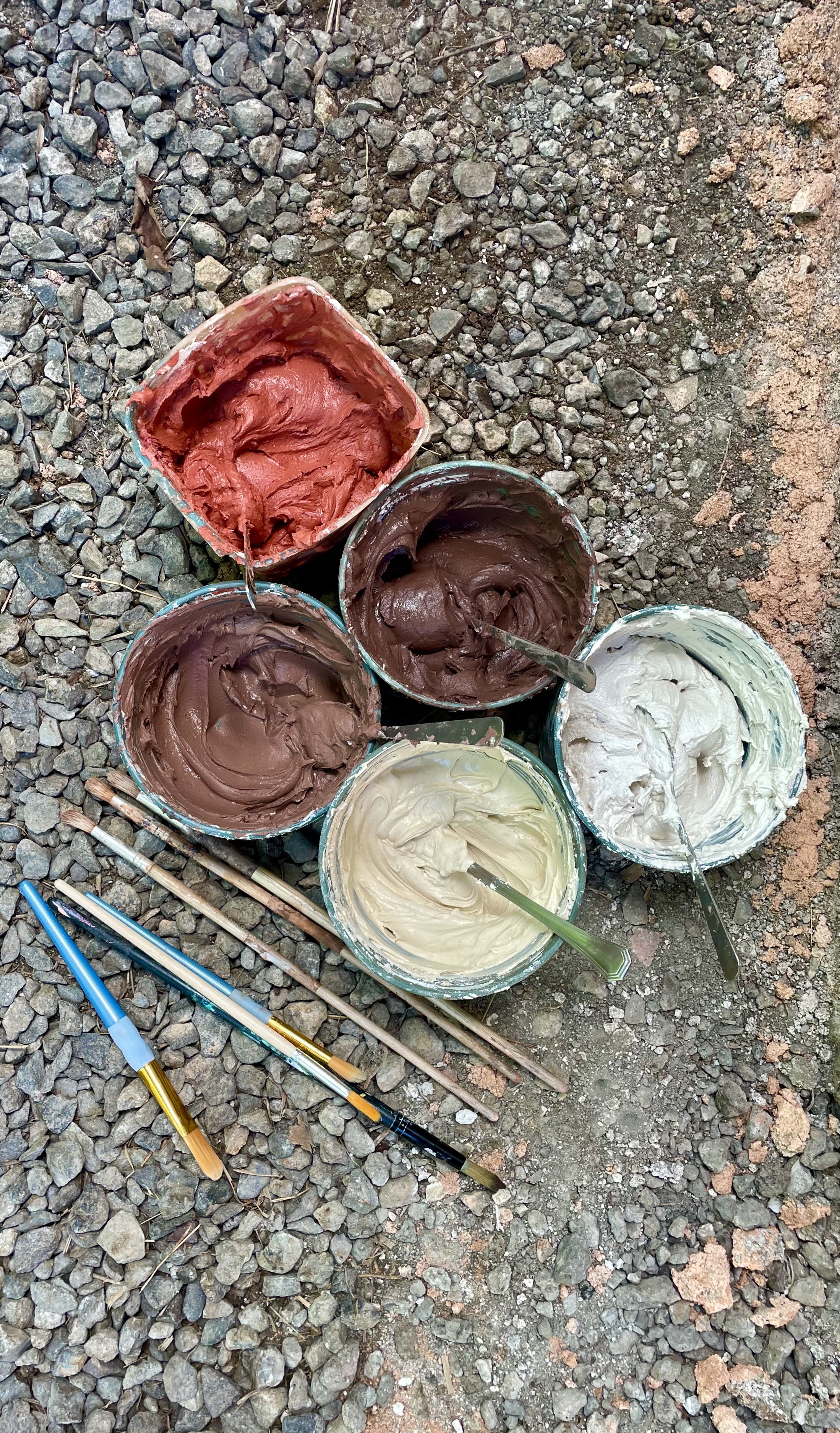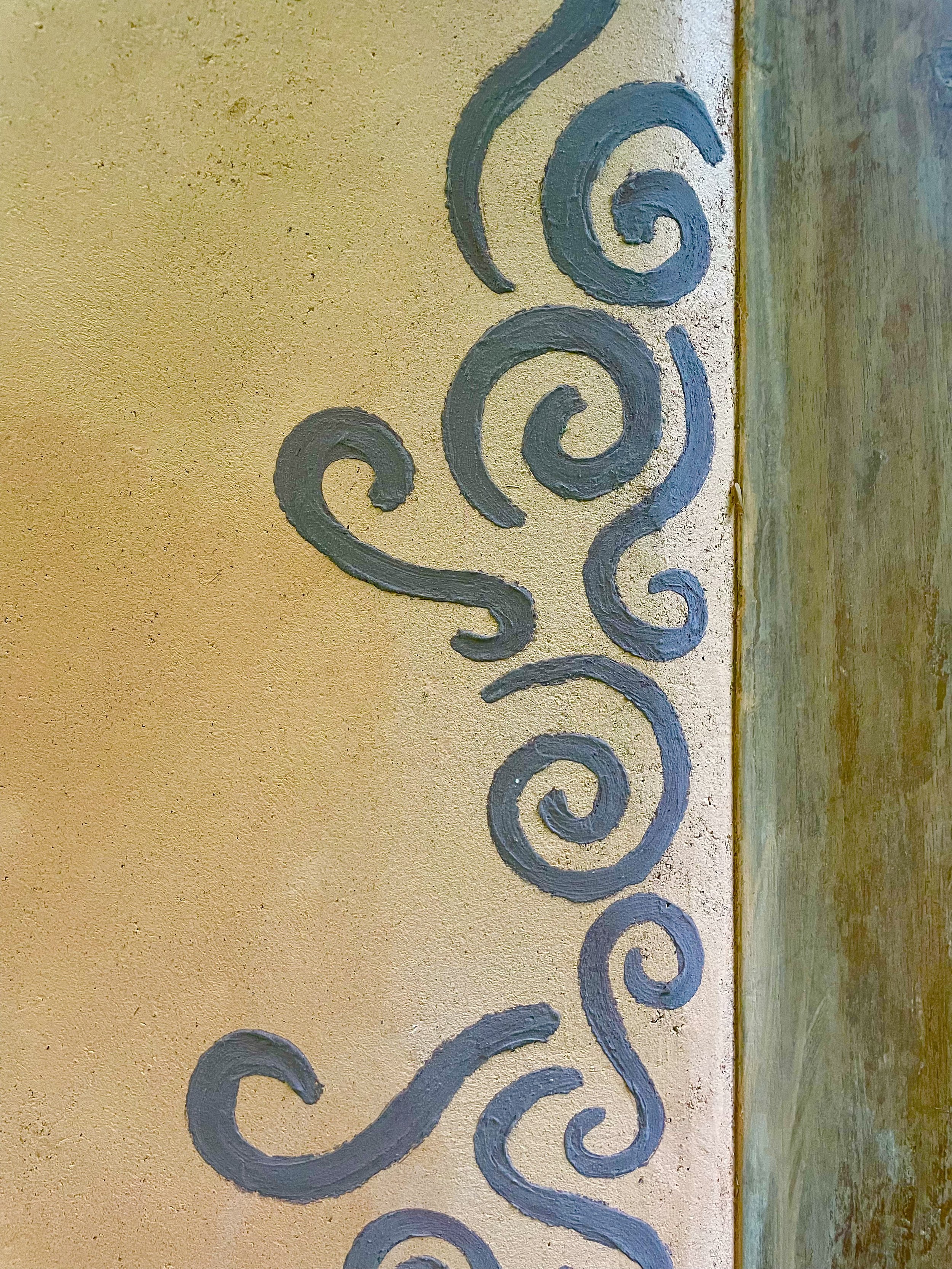Natural Paints for Earthen Walls
By 2023 apprentice Emme Nederbrock
Sample view of the layers of our earthen walls
Our shower walls here at the hankey and goat barn have a base of wattle and daub, a clay base layer, a lime coat, and a lime finisher.
Natural plasters are a key piece of the ranch’s structures. Check out our blog “Lime Plasters are In”, written by a past apprentice for more detail about our natural plasters!
Natural pigments are a fun part of natural building and the options are almost endless. Earth pigments consist of clays, minerals, rocks, carbon, and more ground up into a fine powder which can then be used to mix into your lime finish or natural paint recipes. Pigments can be sourced from all over the world. For example, pigments of the color umber, come from ground manganese and are found in abundance and quality from Italy, Cyprus, and Turkey. Recently, for our first natural building project as apprentices, we refurbished our bathroom walls with lime plasters. As a finishing touch we used a wheat paste recipe to add some small designs for a bit more character.
Clay paint recipe:
One part Kaolin clay powder
One part wheat paste (see recipe below)
One part agricultural lime powder
Pinch of gypsum powder (for preservation purposes)
Pinch of boric acid (for preservation purposes)
Wheat paste base:
One part flour
Six parts water
Pigment as desired
Regarding the wheat paste, boil water, then slowly add flour. Strain to get rid of lumps for a smoother paint. Then, measure out your kaolin clay, wheat paste, and lime, and mix thoroughly. Add your pigments last and have fun experimenting! The quantity is up to you and how much paint you need. The consistency is thick, and adding water can thin it, but will also tend to make the pigment more transparent and the . This paint can be saved in the fridge for a day or so if more time is needed to finish the project.
An element we will soon add to the bathroom walls are a more accented, watercolor-esk natural paint.
Egg tempera paint:
One part egg yolk
Two parts water
Pigment as desired
Take your egg and separate the yolk from the white. This is best done in the hands, passing the yolk from hand to hand until the yolk is almost sticking to your hands due to the dryness of the albumen. Remove the yolk from the albumen and put it in a container. Add water to the yolk and mix. Add desired pigments, watching the consistency of the paint as you add pigments. When we made the paint, a large amount of pigment could be added while maintaining a very thin paint consistency.
Always make color tests for your natural paints
A natural painted home or project can make your heart, and mind happy happy happy! Enjoy experimenting and remember, the earth is your oyster.
Check out these past blogs about natural building
Natural Building and Clay Carving
Building an Adobe Shower with Tadelakt Plaster
Want to Learn More?
Join us for one of our annual Natural Building and Plasters Workshops to get hands on experience in earthen wall systems and plasters.







